Five unsolved GTM problems
and how we're trying to solve them at Clay
While product and engineering teams obsess over performance bottlenecks and data architecture, go-to-market teams are quietly battling a different set of technical constraints. To come together as a GTM Engineering community, we should enumerate the problems we face and think of possible solutions.
There are five unsolved GTME challenges we’re thinking about at Clay:
Signal aggregation
Account hierarchies
Real-time Territories
Rep Interfaces
Feedback Loops
Did we miss any? Let us know in the comments or tell us how you are currently solving one of the above.
TL;DR
Signal aggregation is broken: Too noisy, not actionable, not always real signal.
Account hierarchies are inaccurate or irrelevant: Legal entities ≠ accounts.
Territories are static in a dynamic world: You’re rebalancing accounts once a year. The world changes every day.
Rep interfaces are bloated, fragmented, and outdated: No two companies care about the same data for sellers and so all of their UIs should be different.
Feedback loops barely work for messaging: Automated systems have trouble adjusting messaging based on success metrics, and manual adjustments take far too long.
1. Signal aggregation: too much noise, not enough action
Everyone knows signals are important, but understanding how signals are interacting with one another is one of the biggest challenges in GTME right now. Revenue teams monitor everything from job changes to page visits to product usage to LinkedIn ad clicks. The result can be chaotic, especially when teams are basing automated actions on faulty signals. When every account is triggering something, nothing feels important.
The core issues are:
Irrelevant signals: Not every job change matters. Not every page visit indicates intent.
No prioritization: Signals aren’t weighted, so reps can’t distinguish meaningful activity from background noise.
Poor delivery: Signals show up as Slack pings, list filters, or spreadsheet rows. There’s no system-level clarity.
Some teams try to solve this by having reps interpret signals manually, but that doesn’t scale. Veteran reps might know what matters, but new reps won’t and learning curves don’t all move at the same speed. Others try to solve it by offloading the thinking behind their signals to vended interfaces. But then every company gets the same interface when the reality of signals is that some deserve to be displayed differently - and the signals every company cares about are different.
This isn’t something you solve in one sprint. But by running controlled experiments, instrumenting for outcomes, and iterating on signal logic, you can gradually move from noisy alerts to intelligent pipeline triggers. At Clay, we combine multiple data sources into one enrichment stream and apply logic and weighting to prioritize high-signal accounts. Our centralized GTM Engineering team adjusts these almost weekly. We’re also experimenting with signal combinations and tracking downstream pipeline results to test different approaches. Here is a look at a recent interaction of our rep signals interface (done in Slack).
2. Account hierarchies: finding a single source of truth
Most CRMs treat companies as single entities, but as anyone on a revenue team knows the truth is typically a lot more complicated. M&A activity, holding companies, subsidiaries, franchises, and LLCs make it nearly impossible to rely on a static database to tell you the whole story. What you’re selling into is often different from what you’re billing, which is different from what your CRM says, which is different from what your data provider reports. And each of those structures changes constantly.
Third-party databases also rarely reflect how your company actually wants to sell. So RevOps teams end up duct-taping hierarchies together manually, which doesn’t work.
Here’s how we think of account hierarchies at Clay:
Accept that your org’s selling hierarchy is unique to you.
Normalize multiple third-party data sources into a flexible schema.
Build interfaces where reps and RevOps can remap or override hierarchy logic.
Clay is evolving a unified schema to help with hierarchies, but many teams currently pipe account structures into Snowflake and build around it. But teams that are able to map the real organization that they’re selling into and not just the legal one will be at a huge advantage.
3. Real-time territories: static assignments in a dynamic world
Most sales teams build territories once a year. But the calendar doesn’t care about how efficient and equitable that exercise was. Product launches, economic shifts, elections, layoffs—a lot can affect who should be working on which accounts. If your top reps are stuck with stale books while new signals go to low-performers, it can create even more disequilibrium.
The real challenge is balancing fairness with agility. Account statuses can change wildly over the course of a year: warm ones get cold; dormant ones wake up. Not adjusting to those variables means high-potential accounts sitting untouched because of outdated assignments.
We’ve thought about what a potential set of solutions to real-time territory issues:
Changes in product-market fit
New data sources that change account scoring
Reps’ capacity and strengths
SLA-based reassignment of untouched opps
The tooling here is still early. Most teams rely on spreadsheets or rigid Salesforce logic. Clay is working on account-level rebalancing workflows that plug into CRMs and enforce fairness without sacrificing flexibility. Until then, your best move is to track when territory assignments start diverging from business goals and use GTM engineering to close the gap.
4. Rep interfaces: one size fits no one
Talk to any rep and you’ll hear the same complaint: too many tabs, too much clicking, too little clarity. A single account might require:
A prospecting tool to source contacts
A CRM to get history
An enrichment tool to find titles
A sales engagement platform to sequence
A call dialer to reach out
A Slack thread to see internal context
None of these systems talk to each other in a clean way. And reps are expected to stitch together a coherent workflow while hitting quota. Even worse, most of these tools are one-size-fits-all, which doesn’t help when companies and reps are looking for specific signals and functionalities. Every organization wants to run unique motions and use data differently, and static rep interfaces make that more difficult.
GTM engineers are building custom rep interfaces inside Salesforce and Clay or as standalone web apps. But designing, testing, maintaining, and iterating on those interfaces is still early days. Solving this problem is going to require a repeatable process for:
Pulling data from multiple systems
Rendering it in a clear, reps-first view
Updating it as new workflows or data emerge
Collecting rep feedback and usage telemetry
We believe the future of rep tooling is not buying more SaaS. It’s building composable, flexible UI layers that reflect how your team actually works.
5. Feedback loops for messaging
The temptation is to hand campaign optimization entirely over to AI and let algorithms monitor reply rates, adjust messaging, and retarget based on engagement metrics. This misses the point of what AI actually does well.
AI excels at execution: writing variations of messaging, researching contact details, processing large datasets. But strategic decisions about campaign direction require human judgment informed by market knowledge that AI can't access. When open rates drop or reply sentiment shifts, the response isn't necessarily to change the messaging; it might be to change the target audience, adjust the timing, or reconsider the entire campaign premise.
Campaign data is noisy and context-dependent. A low reply rate might indicate poor messaging, but it could also signal market timing issues, channel saturation, or competitive dynamics. AI can surface these patterns, but interpreting what they mean and deciding how to respond requires human strategic thinking.
The most effective approach treats AI as a research assistant and execution engine, while keeping humans in charge of strategic decisions. Let AI generate messaging variations and identify potential contacts. But have humans evaluate which variations align with your positioning strategy and which contacts fit your ideal customer profile. Use AI to process campaign results, but rely on human judgment to interpret what those results mean and how to adjust your approach.
This division of labor plays to each side's strengths: AI handles scale and pattern recognition, humans handle strategy and contextual interpretation.
Flexible systems create GTM alpha
Most of these problems stem from inflexible systems. Data that can’t be shaped. Interfaces that can’t be changed. Processes that can’t be adapted.
GTM engineers are trying to build their own systems that reflect their unique data, motion, and strategy. The GTM motion that wins in your market probably hasn’t been built yet. But your GTM engineers can create it.



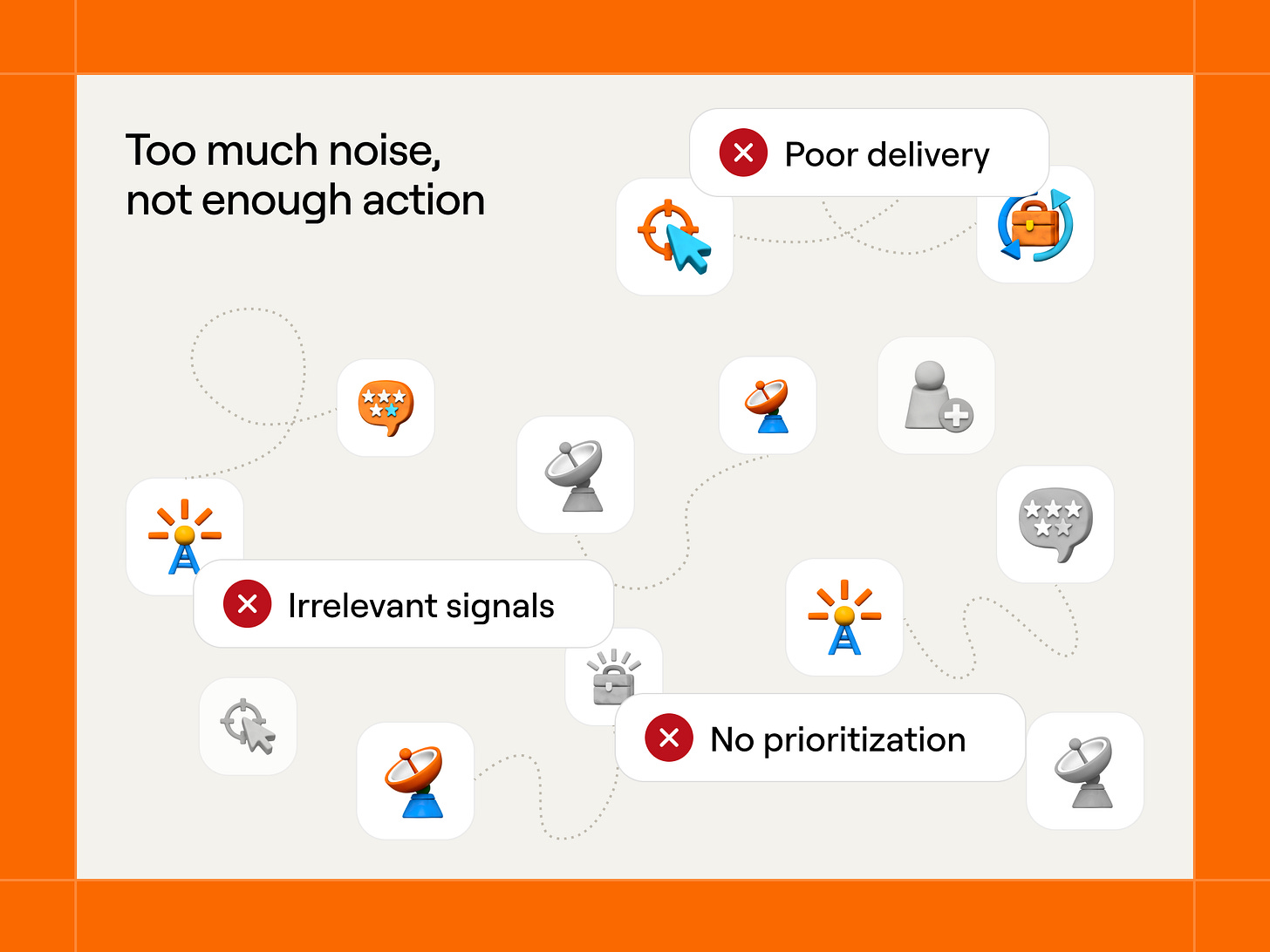
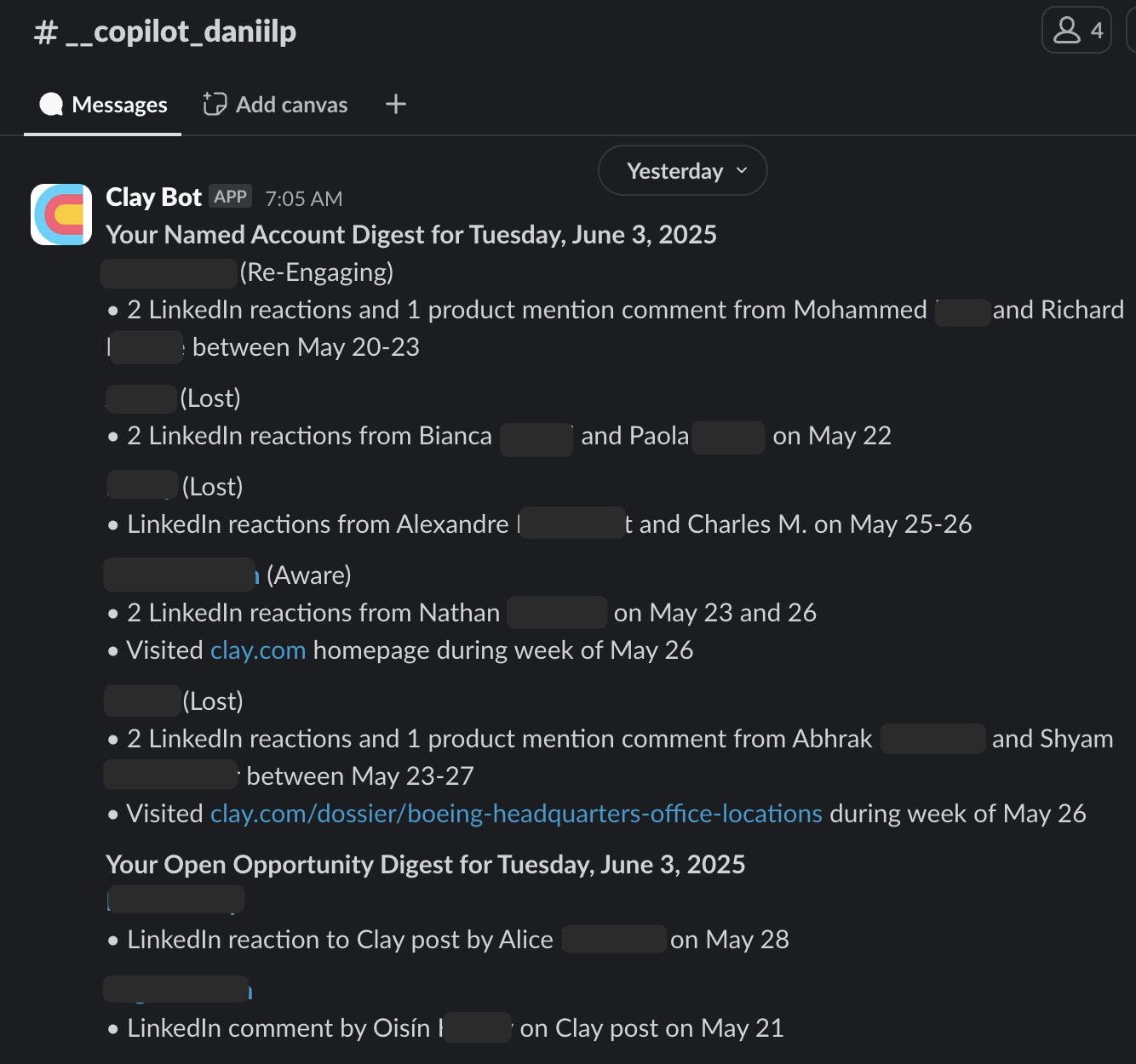
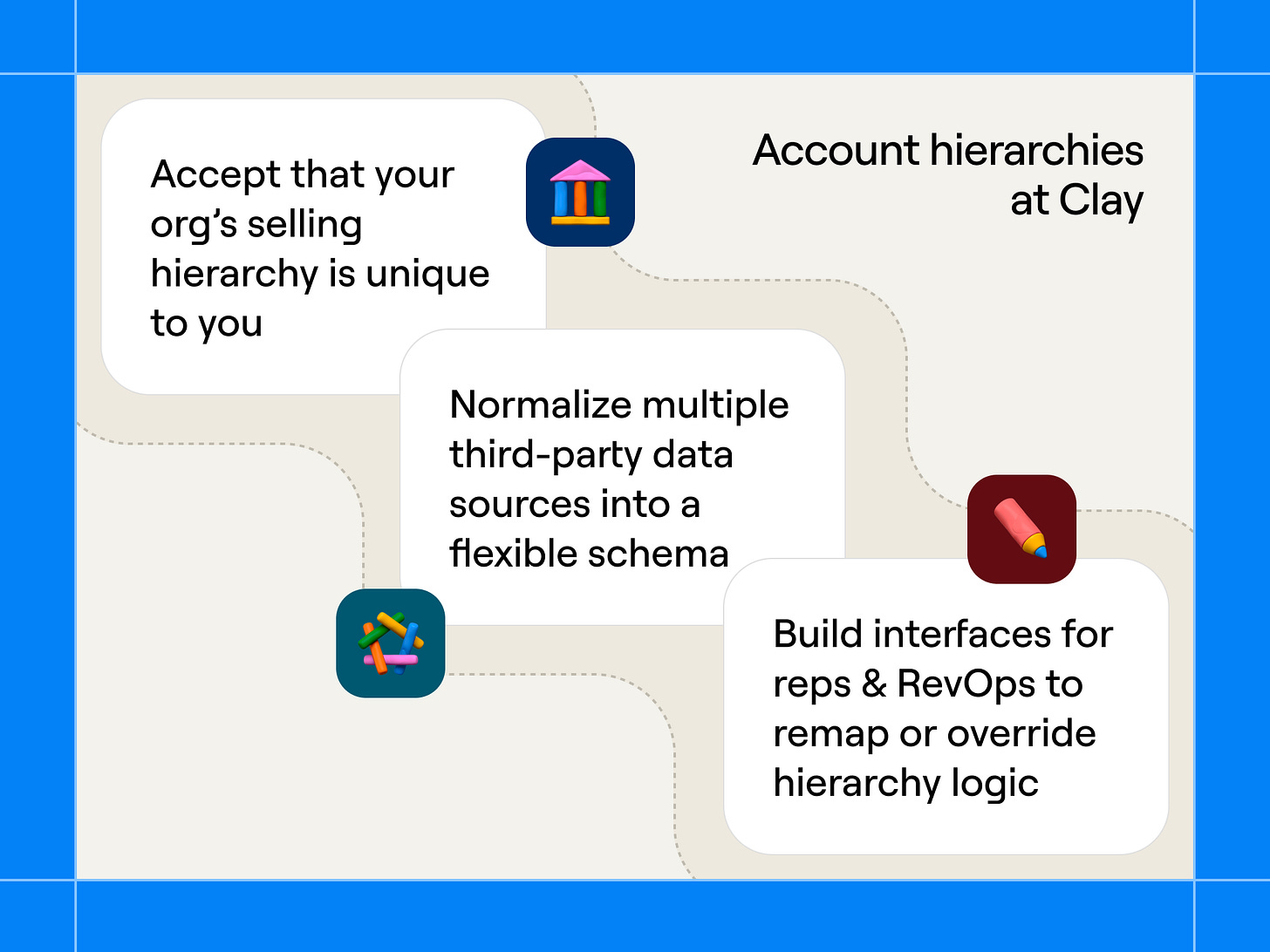
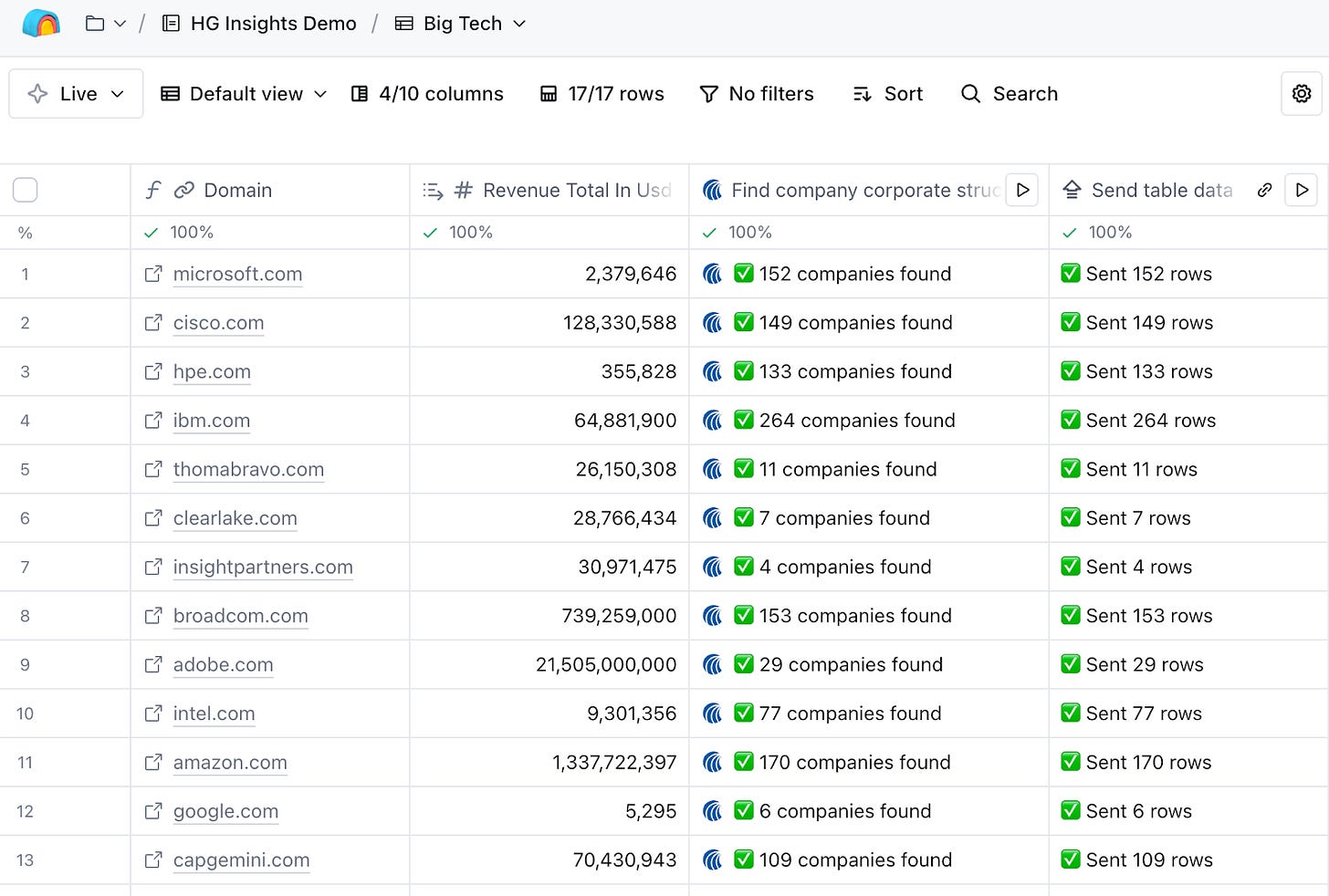
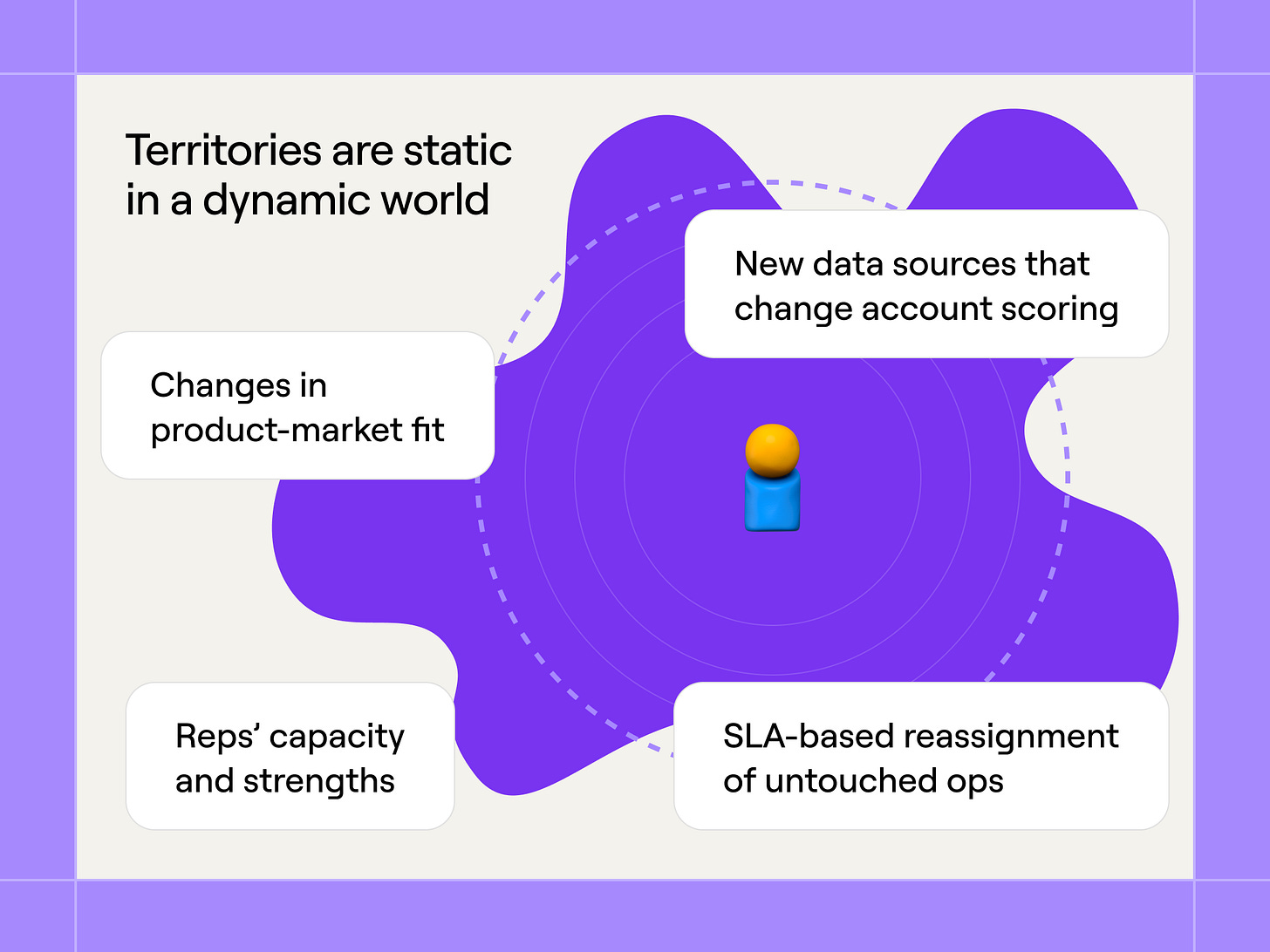
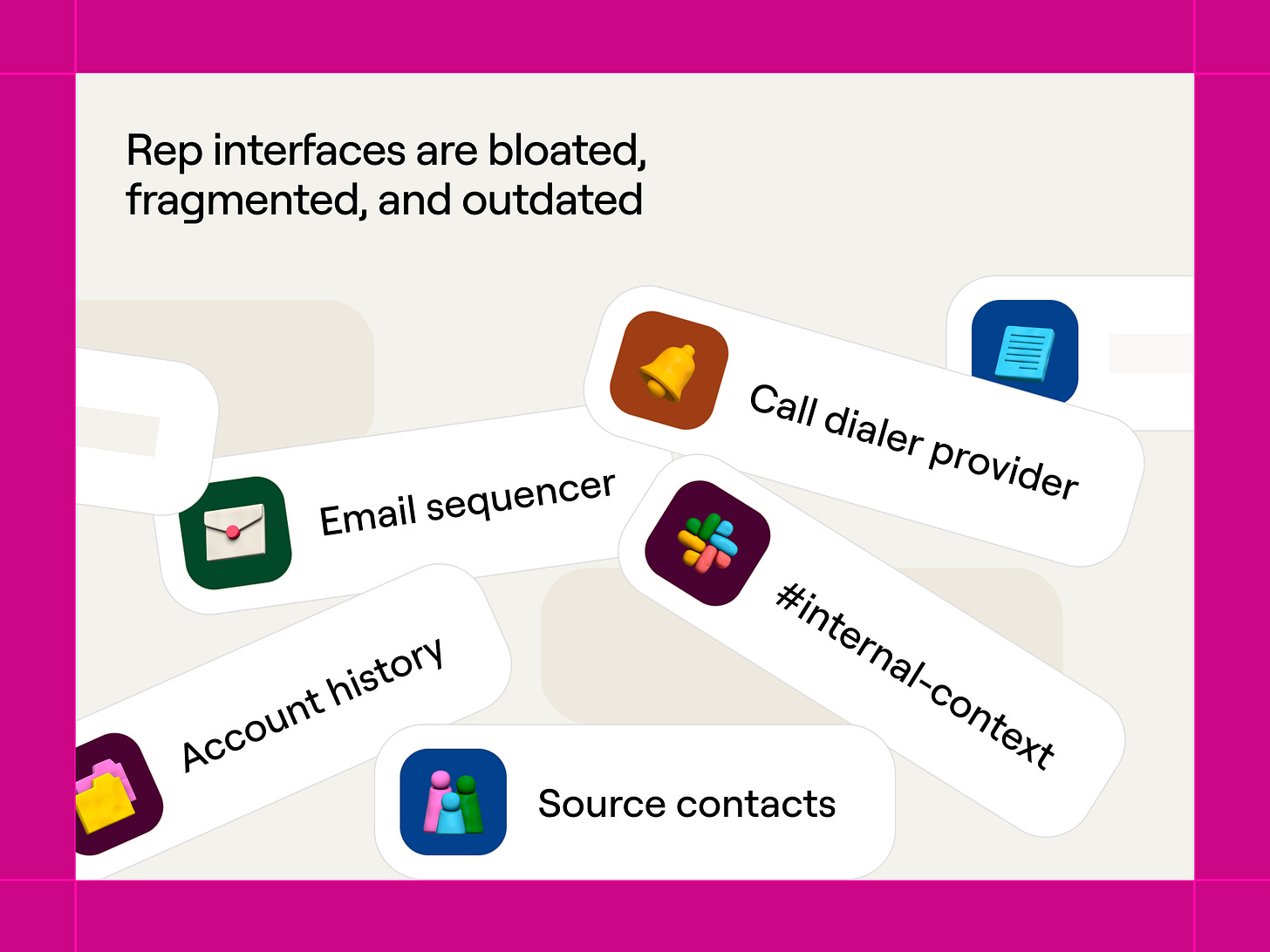
Rep interfaces (pretty much all of the legacy GTM tooling) really need a UI and UX upgrade. I'm excited about this one as there's a lot of headroom for innovation.
I've always thought about this in terms of 'clicks'. How many clicks does it take to do something? For most of what sales reps use today, its too many.
I'll be posting some ideas soon on claymation.io for reimagining these experiences and how Clay will power them behind the scenes.
Thanks for sharing this!! Validates some of the problem statements we're working on ourselves as well. For point #1 about signals, have definitely heard many reps talk about how they don't even bother tracking the signals because they're not useful for them.
We're currently working on the signals and research part, with the reps-first interface you mentioned!
I'd love to see some of these custom interfaces that people are building though!